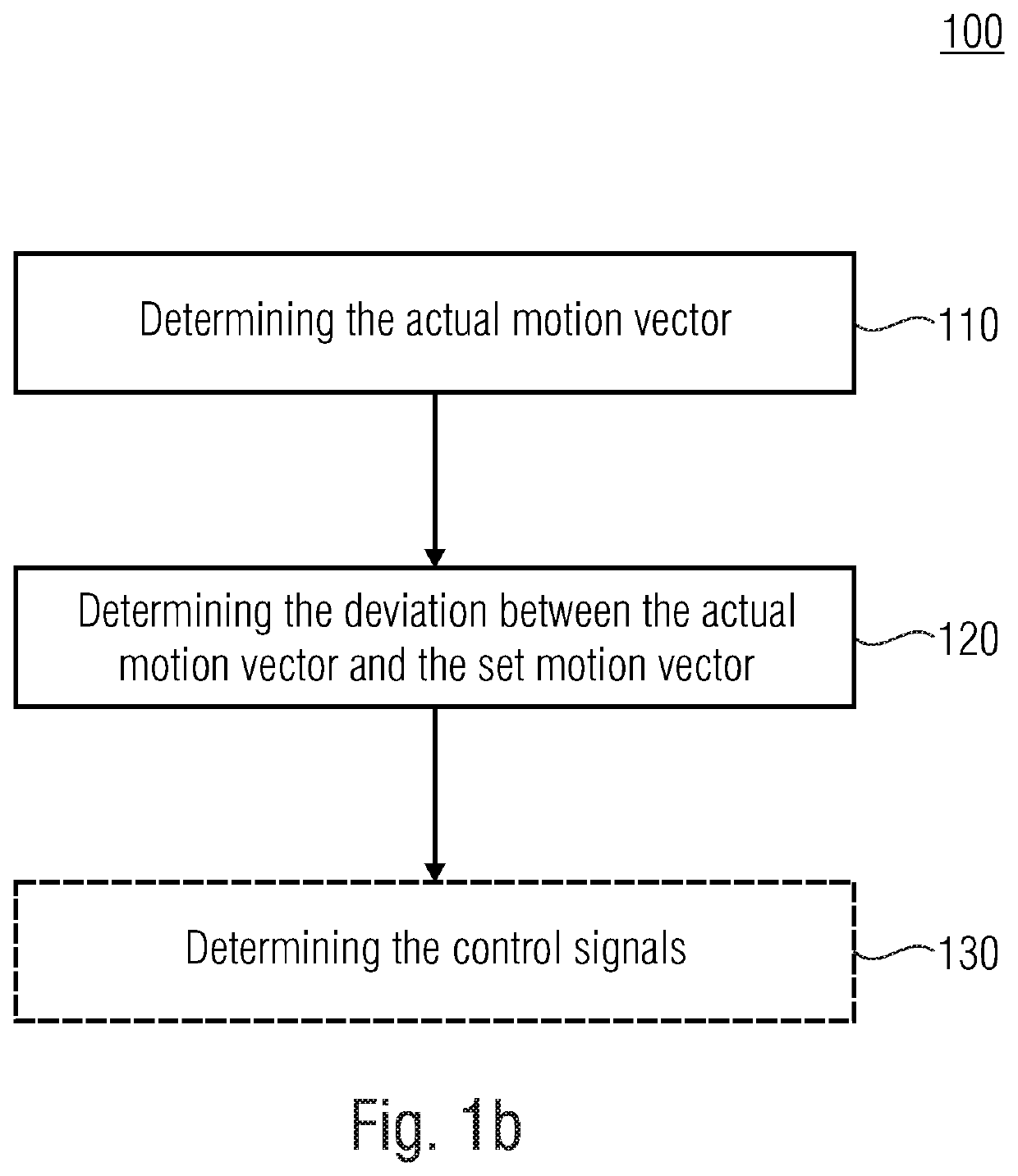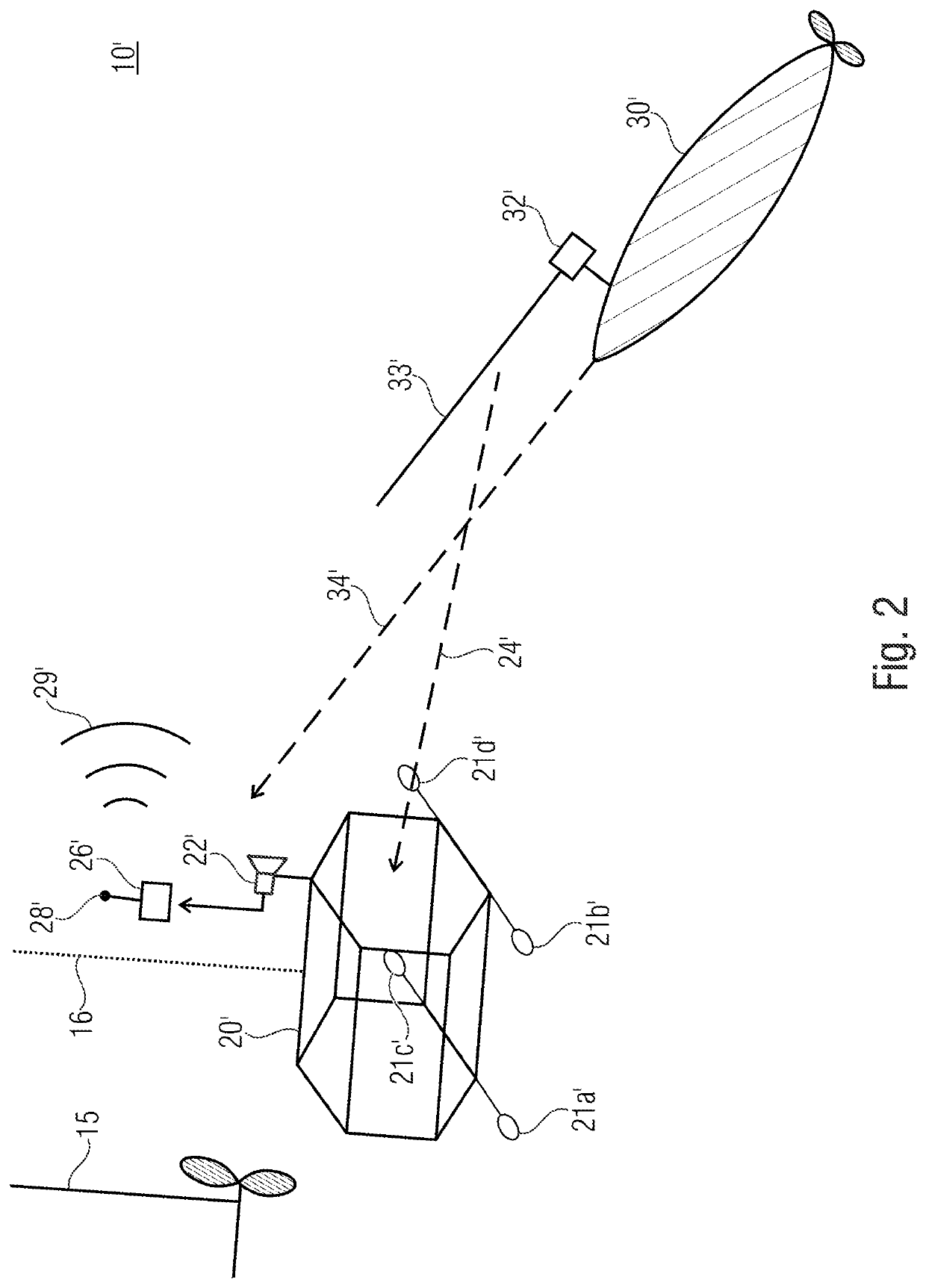System for navigation of an autonomously navigating submersible body during entry into a docking station, method
a technology for autonomous navigation and submersibles, applied in special purpose vessels, instruments, image enhancement, etc., can solve problems such as damage to underwater equipment or mothers, underwater equipment swinging during hauling up, and hitting the ship's side, so as to improve control, reduce the effect of battery capacity and simplify the determination of the actual motion vector
- Summary
- Abstract
- Description
- Claims
- Application Information
AI Technical Summary
Benefits of technology
Problems solved by technology
Method used
Image
Examples
Embodiment Construction
[0028]Before embodiments of the present invention will be discussed below based on the figures, it should be noted that equal elements and structures are provided with the same reference numbers such that the description of the same is interapplicable or exchangeable.
[0029]FIG. 1a shows a system 10 with a docking station 20 and an autonomously navigating submersible body 30.
[0030]In this embodiment, the docking station 20 is configured, for example as tube-shaped or honeycomb-shaped structure and serves to capture and retrieve the autonomously navigating submersible body 30 as well as to protect the same from waves and flotsam and also the collision of the autonomously navigating submersible body 30 with the ship's side of the mother ship (not shown). Typically, the catching station 20 is at least as long as the autonomously navigating submersible body 30. At the beginning of the retrieving action, the autonomously navigating submersible body 30 is below the spume and wave zone in a...
PUM
 Login to View More
Login to View More Abstract
Description
Claims
Application Information
 Login to View More
Login to View More - R&D
- Intellectual Property
- Life Sciences
- Materials
- Tech Scout
- Unparalleled Data Quality
- Higher Quality Content
- 60% Fewer Hallucinations
Browse by: Latest US Patents, China's latest patents, Technical Efficacy Thesaurus, Application Domain, Technology Topic, Popular Technical Reports.
© 2025 PatSnap. All rights reserved.Legal|Privacy policy|Modern Slavery Act Transparency Statement|Sitemap|About US| Contact US: help@patsnap.com



